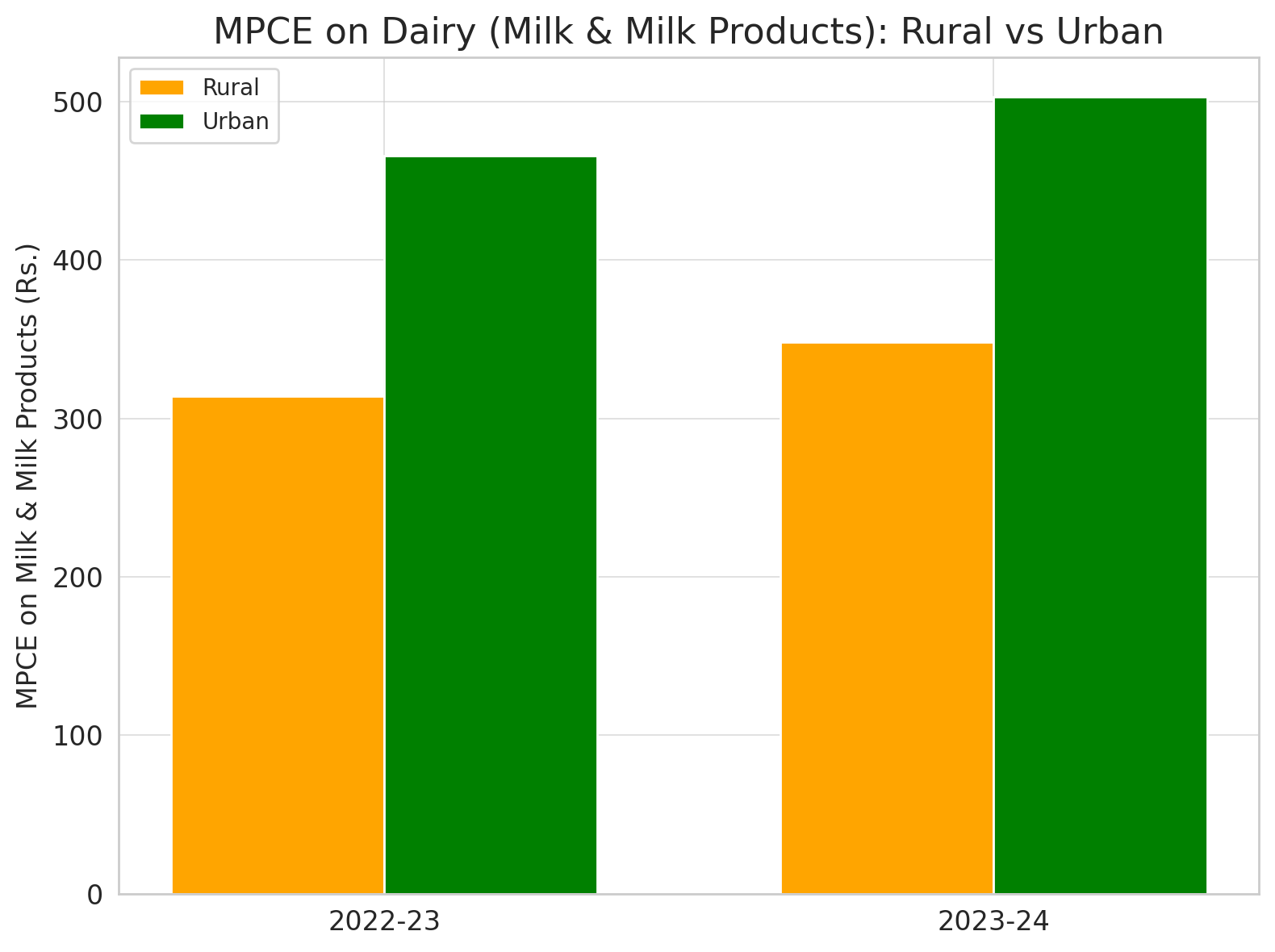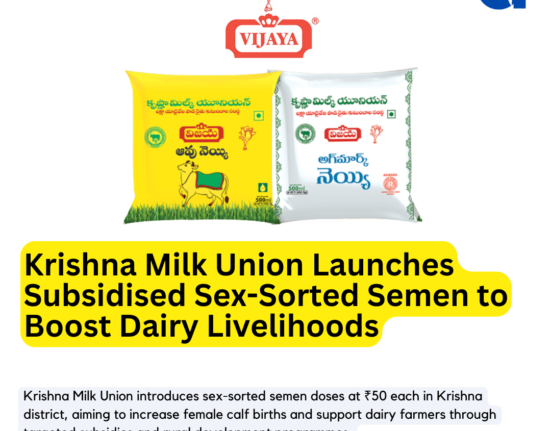By Dairy Dimension | May 2025
India’s global leadership in milk production is well-known, but how does this translate to the daily lives of Indian consumers? New government data on Monthly Per Capita Expenditure (MPCE) for 2022–23 and 2023–24 reveals a complex narrative. Dairy products remain deeply embedded in household spending, with a distinct divergence between rural dependence and urban diversification. Analysis source: Dairy in the Indian Household Budget: A Tale of Two Indias – Jordbrukare
🥛 Rural India: Dairy as a Dietary Cornerstone
In 2023–24, rural households spent ₹348 per person per month on milk and milk products—a 10.8% rise from ₹314 the previous year. This increase highlights dairy’s critical role in rural diets, offering both nutrition and economic stability.
In contrast, urban spending rose from ₹466 to ₹503—an 8% jump. While urban areas spend more in absolute terms, rural households dedicate a larger portion of their overall budget to dairy.
“The data reflects not just a nutritional preference but an economic reality—dairy remains a foundational element in rural household economics,” said Dr. Rakesh Meena, agri-economist and dairy policy advisor.
📊 Budget Allocation: Rural Commitment to Dairy Outpaces Cities
In 2023–24, 8.44% of rural MPCE was allocated to dairy products compared to 7.19% in urban households. This steady or rising budget share in villages suggests that milk continues to be prioritised even amid rising prices.
Urban spending patterns show greater variety, spreading across rent, conveyance, and education, while rural budgets reveal a tighter focus on essential consumables, with dairy at the top.
🍽️ Spending Priorities: Rural Simplicity vs. Urban Complexity
A breakdown of MPCE components underscores dairy’s prominence in rural diets:
| Category | Rural MPCE Share (%) | Urban MPCE Share (%) |
|---|---|---|
| Milk & Dairy | 8.44 | 7.19 |
| Vegetables | 6.03 | 4.12 |
| Cereals | 4.99 | 3.76 |
| Education | 3.24 | 5.97 |
| Conveyance | 7.59 | 8.46 |
| Rent | 0.56 | 6.58 |
In rural regions, dairy outranks transport, education, and vegetables in budget allocation, indicating its enduring value beyond nutrition.
🧭 Implications for the Indian Dairy Industry
1. Rural Stability = Consistent Demand
The growing spend in rural areas suggests dependable demand for traditional dairy items like milk, curd, ghee, and paneer. For dairy cooperatives and private players, this reinforces the value of robust rural distribution networks.
2. Urban Growth Lies in Innovation
Urban markets, while nearing saturation in fluid milk, present opportunities for value-added dairy segments—Greek yogurt, high-protein shakes, lactose-free offerings, and probiotic-rich products.
3. Dairy’s Inelastic Demand Amid Inflation
Even amid rising food inflation, dairy’s share in household budgets remains firm or increases. This resilience reflects dairy’s essential role and should guide policy around milk pricing and procurement.
“Urban consumers may diversify, but rural India’s dairy dependency is unwavering. That’s a signal for the sector to deepen rural reach while diversifying urban offerings,” said Priya Khanna, dairy analyst and FMCG strategist.







